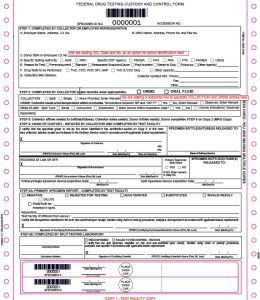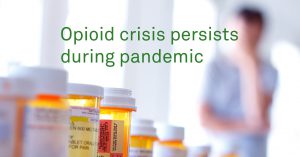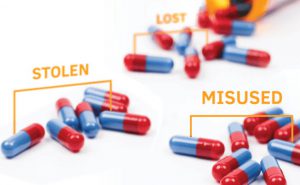For more than three decades, we have been publishing the annual Quest Diagnostics Drug Testing Index™ (DTI) featuring data and trends for workforce drug testing in the United States. Over the past 30 years, we have noted changes in drug positivity and regional trends. Today, our industry faces state marijuana legalization and an opioid crisis that was declared a national health emergency, claiming the lives of an estimated 130 Americans each day who overdose on opioids.
In the DTI, we make distinctions by specimen type and
examine three categories of workers: the federally-mandated, safety-sensitive workforce;
the general U.S. workforce; and the combined U.S. workforce. However, one element
that was historically absent from our annual reporting was drug positivity by
industry sector. Due in large part to requests from industry partners and the
media, we undertook a major, time-intensive database initiative during the past
18 months to classify tens of thousands of customer companies by industry
sector.
Millions of urine drug test results
Our new, enhanced DTI reporting presents industry positivity
rates based upon classifications of our customer data by industry sector using
the North American Industry Classification System (NAICS). The data in our industry
reporting features laboratory-based general U.S. workforce urine drug test
results for routine drug testing prior to evaluation by a Medical Review
Officer. Rehabilitation, criminal justice, point of collection confirmation, and
federally-mandated, safety-sensitive testing data were excluded. In the end, the
industry-classified data accounted for more than 50% of our general U.S.
workforce urine testing volume, representing more than 3 million annual drug test
results.
Each industry had to meet a minimum average annual volume of
at least 50,000 urine drug tests to be included in our analysis. We excluded 4 industry
sectors due to insufficient volume. Those sectors are: Agriculture, Forestry,
Fishing and Hunting; Mining; Management of Companies & Enterprises; and
Arts, Entertainment & Recreation.
The results of this analysis, which was the first-ever report of drug use patterns by industry, is based on a 3-year analysis of American companies, which complete workplace drug testing with Quest Diagnostics.”
First-ever findings
Drug use by
the U.S. workforce increased each year — and by double-digits over 2 years —
between 2015 and 2017, in 5 of 16 major U.S. industry sectors analyzed. Retail
Trade (5.3%), Health Care and Social Assistance (4.7%), and Real Estate Rental
and Leasing (4.6%) sectors had the highest overall positivity rates in 2017,
while the Utilities (2.8%) and Finance and Insurance (2.6%) sectors had the
lowest rates. Five sectors experienced year-over-year increases with a
double-digit increase in their positivity rates between 2015 and 2017:
Transportation and Warehousing (21.4%); Other Services (Except Public
Administration) (15.4%); Finance and Insurance (13%); Retail Trade (12.8%); and
Wholesale Trade (11.8%).
High
positivity industries
The Retail Tradeindustryhad the highest 2017 positivity rate
among the 16 sectors reported. The sector observed increases in overall
positivity each year between 2015 and 2017 (its positivity rate was 4.7% in
2015, 5.1% in 2016, and 5.3% in 2017). In addition to a nearly 43% growth in
cocaine positivity between 2015 and 2017 — more than twice the increase of the
general U.S. workforce — marijuana positivity increased more than 18%.
The amphetamine positivity rate rose by nearly 16% in the
Health Care and Social Assistance sector. Amphetamine is a central nervous
system stimulant and includes drugs such as Adderall® that may be
prescribed for certain conditions, but which may also be used illicitly. Along
with increasing amphetamine positivity rates, this sector saw the second
highest overall positivity in 2017 (4.7%). The Real Estate Rental and
Leasing sector held the spot for the third highest overall positivity in 2017 (4.6%).
Marijuana
Marijuana
was the most commonly detected substance, with the highest drug positivity rate
of all drug classes across the majority of industry sectors. This is consistent
with the latest data from the Quest Diagnostics Drug Testing Index™ report
showing marijuana reigns as the most commonly detected drug in the American
workforce. Marijuana positivity was highest in Accommodation and Food Services,
at 3.5% in 2017, more than 34% higher than the national positivity rate of 2.6%
for the general U.S. workforce.
Eight
sectors experienced year-over-year increases in marijuana positivity between
2015 and 2017:
- Transportation and Warehousing (33.3%)
- Other Services (except Public Administration)
(33.3%)
- Construction (26.7%)
- Wholesale Trade (23.5%)
- Manufacturing (23.1%)
- Accommodation and Food Services (20.7%)
- Administrative Support, Waste Management and
Remediation Services (19.0%)
- Retail Trade (18.5%)
Summary
We understand the value of drug testing workers in safety-sensitive roles.
However, tens of thousands of employees – or would-be employees – have
interactions with customers which may be negatively influenced by their drug
use habit and its potentially negative effects.
Our analysis
suggests that employers across nearly every industry should be aware that
employee drug use has the potential to put workplaces at risk. Moreover, drug
test positivity in the majority of industry sectors analyzed is growing, with the
highest growth rates coming from consumer-facing industries, including jobs in
Retail and Health Care and Social Assistance.
It’s clear that the risks of employee drug use extend far beyond transportation and heavy machinery accidents. Workers across all industries use drugs, and many at rates greater than we’ve seen in previous years. While a retail clerk, restaurant server, or nurse may not cause a job-related automobile accident, pipeline explosion, or forklift crash, these and other customer-facing roles are certainly in a position to influence buyer decisions, customer satisfaction, and brand quality in a number of detrimental and hard-to-quantify ways.
This article was published in the spring 2019 issue of DATIA focus magazine.
For more information about drug testing, visit our website.
Photo courtesy of DATIA focus magazine.




















For more than three decades, we have been publishing the annual Quest Diagnostics Drug Testing Index™ (DTI) featuring data and trends for workforce drug testing in the United States. Over the past 30 years, we have noted changes in drug positivity and regional trends. Today, our industry faces state marijuana legalization and an opioid crisis that was declared a national health emergency, claiming the lives of an estimated 130 Americans each day who overdose on opioids.
In the DTI, we make distinctions by specimen type and examine three categories of workers: the federally-mandated, safety-sensitive workforce; the general U.S. workforce; and the combined U.S. workforce. However, one element that was historically absent from our annual reporting was drug positivity by industry sector. Due in large part to requests from industry partners and the media, we undertook a major, time-intensive database initiative during the past 18 months to classify tens of thousands of customer companies by industry sector.
Millions of urine drug test results
Our new, enhanced DTI reporting presents industry positivity rates based upon classifications of our customer data by industry sector using the North American Industry Classification System (NAICS). The data in our industry reporting features laboratory-based general U.S. workforce urine drug test results for routine drug testing prior to evaluation by a Medical Review Officer. Rehabilitation, criminal justice, point of collection confirmation, and federally-mandated, safety-sensitive testing data were excluded. In the end, the industry-classified data accounted for more than 50% of our general U.S. workforce urine testing volume, representing more than 3 million annual drug test results.
Each industry had to meet a minimum average annual volume of at least 50,000 urine drug tests to be included in our analysis. We excluded 4 industry sectors due to insufficient volume. Those sectors are: Agriculture, Forestry, Fishing and Hunting; Mining; Management of Companies & Enterprises; and Arts, Entertainment & Recreation.
The results of this analysis, which was the first-ever report of drug use patterns by industry, is based on a 3-year analysis of American companies, which complete workplace drug testing with Quest Diagnostics.”
First-ever findings
Drug use by the U.S. workforce increased each year — and by double-digits over 2 years — between 2015 and 2017, in 5 of 16 major U.S. industry sectors analyzed. Retail Trade (5.3%), Health Care and Social Assistance (4.7%), and Real Estate Rental and Leasing (4.6%) sectors had the highest overall positivity rates in 2017, while the Utilities (2.8%) and Finance and Insurance (2.6%) sectors had the lowest rates. Five sectors experienced year-over-year increases with a double-digit increase in their positivity rates between 2015 and 2017: Transportation and Warehousing (21.4%); Other Services (Except Public Administration) (15.4%); Finance and Insurance (13%); Retail Trade (12.8%); and Wholesale Trade (11.8%).
High positivity industries
The Retail Tradeindustryhad the highest 2017 positivity rate among the 16 sectors reported. The sector observed increases in overall positivity each year between 2015 and 2017 (its positivity rate was 4.7% in 2015, 5.1% in 2016, and 5.3% in 2017). In addition to a nearly 43% growth in cocaine positivity between 2015 and 2017 — more than twice the increase of the general U.S. workforce — marijuana positivity increased more than 18%.
The amphetamine positivity rate rose by nearly 16% in the Health Care and Social Assistance sector. Amphetamine is a central nervous system stimulant and includes drugs such as Adderall® that may be prescribed for certain conditions, but which may also be used illicitly. Along with increasing amphetamine positivity rates, this sector saw the second highest overall positivity in 2017 (4.7%). The Real Estate Rental and Leasing sector held the spot for the third highest overall positivity in 2017 (4.6%).
Marijuana
Marijuana was the most commonly detected substance, with the highest drug positivity rate of all drug classes across the majority of industry sectors. This is consistent with the latest data from the Quest Diagnostics Drug Testing Index™ report showing marijuana reigns as the most commonly detected drug in the American workforce. Marijuana positivity was highest in Accommodation and Food Services, at 3.5% in 2017, more than 34% higher than the national positivity rate of 2.6% for the general U.S. workforce.
Eight sectors experienced year-over-year increases in marijuana positivity between 2015 and 2017:
Summary
We understand the value of drug testing workers in safety-sensitive roles. However, tens of thousands of employees – or would-be employees – have interactions with customers which may be negatively influenced by their drug use habit and its potentially negative effects.
Our analysis suggests that employers across nearly every industry should be aware that employee drug use has the potential to put workplaces at risk. Moreover, drug test positivity in the majority of industry sectors analyzed is growing, with the highest growth rates coming from consumer-facing industries, including jobs in Retail and Health Care and Social Assistance.
It’s clear that the risks of employee drug use extend far beyond transportation and heavy machinery accidents. Workers across all industries use drugs, and many at rates greater than we’ve seen in previous years. While a retail clerk, restaurant server, or nurse may not cause a job-related automobile accident, pipeline explosion, or forklift crash, these and other customer-facing roles are certainly in a position to influence buyer decisions, customer satisfaction, and brand quality in a number of detrimental and hard-to-quantify ways.
This article was published in the spring 2019 issue of DATIA focus magazine.
For more information about drug testing, visit our website.
Photo courtesy of DATIA focus magazine.